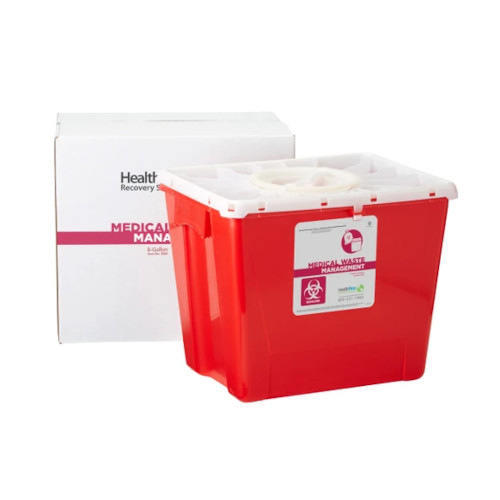Ecological Obligation: The Eco-Friendly Approach to Medical Waste Disposal
Wiki Article
Exploring Different Waste Disposal Options for a Cleaner Environment
In the quest of a cleaner atmosphere, the administration of garbage disposal has actually emerged as an important prime focus for sustainable development. With a wide variety of garbage disposal options available, ranging from traditional landfill methods to innovative waste-to-energy innovations, the option of how we handle our waste has far-reaching effects for our earth's health. By checking out the different methods and methods employed in recycling, composting, incineration, land fill monitoring, and waste-to-energy procedures, a deeper understanding of their influences and performance can be gotten. The mission for optimal garbage disposal techniques that prioritize environmental conservation while satisfying the needs of an expanding populace remains a pushing problem in today's globe.Recycling Techniques
Applying efficient reusing techniques is crucial in reducing waste and promoting sustainability in our environment. Reusing involves the procedure of converting waste products into recyclable things to avoid unneeded disposal. Among the most typical recycling approaches is material recuperation, where materials like paper, glass, steel, and plastic are collected, arranged, and refined to create new products. This procedure not just conserves all-natural sources yet likewise minimizes power consumption and greenhouse gas discharges connected with creating brand-new products from scratch.Another important recycling technique is composting, which involves decaying natural waste like food scraps and backyard trimmings into nutrient-rich soil. This process not only diverts organic waste from landfills however likewise produces a useful resource for gardening and agriculture. Additionally, upcycling is an innovative recycling approach that includes changing old or disposed of materials into products of better or worth. By integrating these numerous reusing techniques into our waste management practices, we can dramatically lower our ecological footprint and relocate in the direction of a much more sustainable future.

Composting Strategies
Efficient waste administration techniques, such as recycling approaches, pave the way for a cleaner atmosphere, and currently, shifting the emphasis to 'Composting Techniques', we explore lasting ways to disintegrate natural waste for environmental advantage. medical waste removal service.Composting is an all-natural procedure that transforms organic waste, like food scraps and yard trimmings, right into a nutrient-rich dirt amendment. The secret to effective composting hinges on creating the ideal equilibrium of environment-friendly materials, such as vegetables and fruit scraps, and brown products, like dried out leaves and twigs. These products decay with the help of bacteria, damaging down the waste right into useful garden compost.
Standard backyard composting includes layering natural products in a bin or stack and frequently transforming the blend to freshen it. By making use of composting techniques, we can reduce the quantity of waste sent out to land fills while producing a helpful item for improving dirt and sustaining plant development.
Incineration Disadvantages and pros
Incineration, as a waste disposal method, provides both benefits and drawbacks that merit careful consideration in the realm of lasting waste management practices. On the favorable side, incineration can significantly reduce the volume of waste, reducing the requirement for landfill area and possibly reducing greenhouse gas discharges.However, there are remarkable disadvantages to incineration. One significant problem is the possible release of dangerous toxins right into the air, such as dioxins, heavy metals, and particle issue, which can have unfavorable impacts on human health and the setting. In addition, the high first investment and operational expenses of incineration facilities present economic challenges, making it a less cost-effective option compared to other waste management strategies. read Mindful surveillance and policy are vital to mitigate these unfavorable influences and optimize the benefits of incineration as component of a detailed waste administration approach.
Landfill Management Techniques
Land fills play a critical duty in waste monitoring and ecological conservation by offering a containment system for the disposal of strong waste products. By condensing the waste, the quantity is decreased, enabling for more waste to be accommodated over time.Furthermore, the implementation of daily cover techniques is essential in decreasing smells, stopping trash, and decreasing the attraction of insects. Treatment the disposed waste at the end of daily aids to consist of smells and stop prospective environmental contamination. Additionally, the surveillance of land fill gas exhausts and leachate levels is important in making certain that ecological requirements are met and that any possible dangers to bordering communities are reduced.

Waste-to-Energy Technologies
Among the cutting-edge approaches to squander administration entails harnessing Waste-to-Energy innovations to convert solid waste right into functional power resources. Waste-to-Energy (WtE) modern technologies incorporate a variety of procedures that aim to extract energy from waste materials with thermal, chemical, or biological ways. This conversion procedure not just lowers the quantity of waste that winds up in garbage dumps but also produces valuable power resources such as electrical energy, warm, or biofuels.Incineration entails melting waste at high temperatures to generate warmth and electrical energy. Gasification converts waste right into a syngas, which can be utilized for power generation or chemical production.
Applying Waste-to-Energy modern technologies can help minimize environmental issues associated with traditional garbage disposal approaches while simultaneously giving a renewable energy resource. Careful factor to consider needs to be given to exhausts control and ensuring the sustainability of feedstock products for these technologies to be absolutely advantageous for a cleaner atmosphere.

Conclusion
To conclude, discovering numerous waste disposal choices such as reusing, composting, incineration, land fill management, and waste-to-energy innovations is crucial for promoting a cleaner atmosphere - click here. Each approach has its own benefits and obstacles, however by making use of a combination of these strategies, we can work towards lowering the amount of waste that finishes up in land fills and eventually add to a much more sustainable future for generations aheadWith a wide range of waste disposal alternatives readily available, varying from typical land fill approaches to cutting-edge waste-to-energy modern technologies, the option of how we handle our waste has far-ranging implications for our planet's well-being. medical waste removal near me.Incineration, as a waste disposal approach, offers both benefits and negative aspects that warrant mindful factor to consider in the world of lasting waste administration methods.Garbage dumps play a critical duty in waste management and environmental preservation by providing a containment system for the disposal of solid waste materials. By condensing the waste, the quantity is lowered, permitting for even more waste to be suited over time
One of the cutting-edge techniques to lose administration involves harnessing Waste-to-Energy modern technologies to transform strong waste into usable power resources.
Report this wiki page